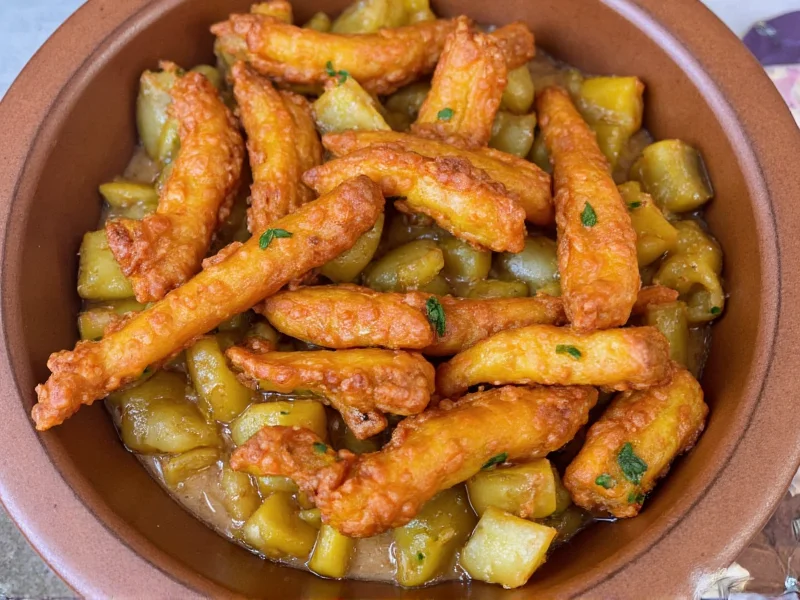Understanding the essence of Creole taste requires exploring its historical roots and culinary DNA. Emerging in the cosmopolitan port city of New Orleans, Creole cuisine represents one of America's first fusion food traditions, blending French and Spanish culinary techniques with African spice traditions, Caribbean ingredients, and Native American cooking methods. This distinctive flavor profile developed among the city's established urban population, including free people of color, creating dishes that were more refined and ingredient-conscious than the rustic country cooking that would later be known as Cajun cuisine.
The Flavor Architecture of Authentic Creole Cooking
At the heart of Creole taste lies a carefully balanced flavor architecture that distinguishes it from other Southern and regional American cuisines. The foundation begins with the 'holy trinity'—equal parts onions, celery, and bell peppers—sautéed slowly to develop sweetness without browning. This differs from the Cajun version which often includes garlic earlier in the cooking process.
Tomatoes serve as a signature component that separates most Creole dishes from their Cajun counterparts. Whether in the form of crushed tomatoes, tomato paste, or fresh tomatoes, this acidic element provides brightness and complexity that balances the richness of other ingredients. The roux—cooked flour and fat—typically reaches a peanut butter or milk chocolate color rather than the darker chocolate hue common in Cajun cooking, resulting in a more subtle nuttiness rather than intense roasted flavors.
| Flavor Component | Creole Manifestation | Common Ingredients |
|---|---|---|
| Base Aromatics | Holy Trinity (onion, celery, bell pepper) | Yellow onions, green bell peppers, celery |
| Acidity | Tomato-based | Crushed tomatoes, tomato paste, fresh tomatoes |
| Roux | Medium color (peanut butter to milk chocolate) | All-purpose flour, butter or oil |
| Heat Profile | Subtle background warmth | Cayenne pepper, hot sauce (used sparingly) |
| Herb Profile | Balanced and aromatic | Thyme, parsley, bay leaves, oregano |
Creole vs. Cajun: Decoding the Flavor Differences
One of the most common points of confusion in Southern cuisine involves distinguishing between Creole and Cajun taste profiles. While both originate from Louisiana and share some ingredients, their flavor signatures differ significantly:
Creole cuisine developed in urban New Orleans among a diverse population including French, Spanish, African, Caribbean, and Italian influences. This resulted in dishes featuring tomatoes, a greater variety of spices, and more emphasis on seafood and refined techniques. Classic Creole dishes like Shrimp Creole, Oysters Rockefeller, and Chicken Clemenceau showcase this sophisticated flavor profile.
Cajun cuisine, by contrast, evolved from the rural Acadian settlers in西南 Louisiana. It features darker roux, no tomatoes in traditional preparations, more game meats, and generally spicier profiles. Dishes like gumbo z'herbes, boudin, and crawfish étouffée represent this earthier, more rustic tradition.
The difference in heat application illustrates this distinction well. In Creole cooking, cayenne pepper and hot sauce are used to enhance rather than dominate, creating a subtle warmth in the background of complex flavors. Cajun cooking often features more aggressive heat that becomes a primary flavor component.
Signature Dishes That Define Creole Taste
Several iconic dishes perfectly capture the essence of Creole flavor:
- Shrimp Creole—Perhaps the most definitive Creole dish, featuring shrimp in a tomato-based sauce with the holy trinity, Worcestershire sauce, and a carefully balanced spice mix that includes cayenne but doesn't overwhelm
- Creole Gumbo—Unlike its Cajun counterpart, Creole gumbo typically includes tomatoes and often features seafood as the primary protein, with a medium-colored roux providing subtle nuttiness
- Pompano en Papillote—A classic New Orleans dish where fish is steamed in parchment with a rich Creole sauce featuring tomatoes, mushrooms, and a delicate spice balance
- Red Beans and Rice (Creole style)—Prepared on Mondays with tomatoes, a medium roux, and often including Andouille sausage for depth rather than intense heat
Modern Interpretations of Traditional Creole Taste
Contemporary chefs continue to honor Creole taste while adapting to modern palates and ingredients. Many New Orleans restaurants now offer lighter versions of classic dishes, reducing roux quantities while maintaining flavor complexity through technique. Some chefs experiment with global influences while respecting the fundamental flavor architecture—adding Asian ingredients to seafood dishes while maintaining the holy trinity foundation, for example.
Home cooks seeking authentic Creole taste should focus on proper technique rather than specific branded seasonings. Building flavors slowly, developing the holy trinity properly, and balancing acidity with richness remain essential. The best Creole dishes achieve harmony among all elements rather than featuring any single dominant flavor.
Identifying Authentic Creole Flavor Profiles
When evaluating whether a dish truly represents Creole taste, look for these markers:
- The presence of tomatoes as a foundational element in most main dishes
- A medium-colored roux that contributes flavor without overwhelming bitterness
- Balanced seasoning where no single spice dominates
- Prominence of seafood in traditional preparations
- Use of the holy trinity as the aromatic base
- Subtle heat that enhances rather than defines the dish
Understanding what does creole taste like requires experiencing these elements in harmony. The most authentic Creole dishes create a complex flavor journey where European technique, African spice traditions, and New World ingredients converge in balanced sophistication—a culinary tradition that remains one of America's most distinctive regional cuisines.











 浙公网安备
33010002000092号
浙公网安备
33010002000092号 浙B2-20120091-4
浙B2-20120091-4